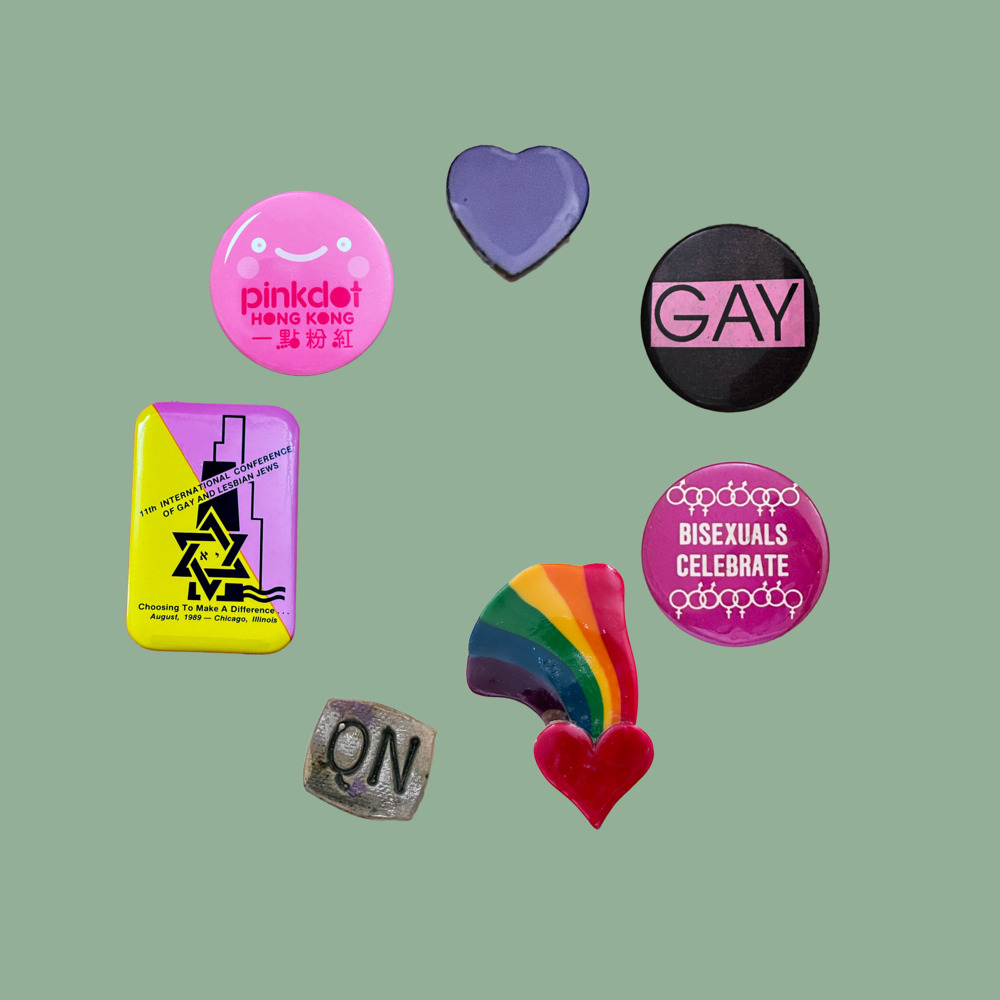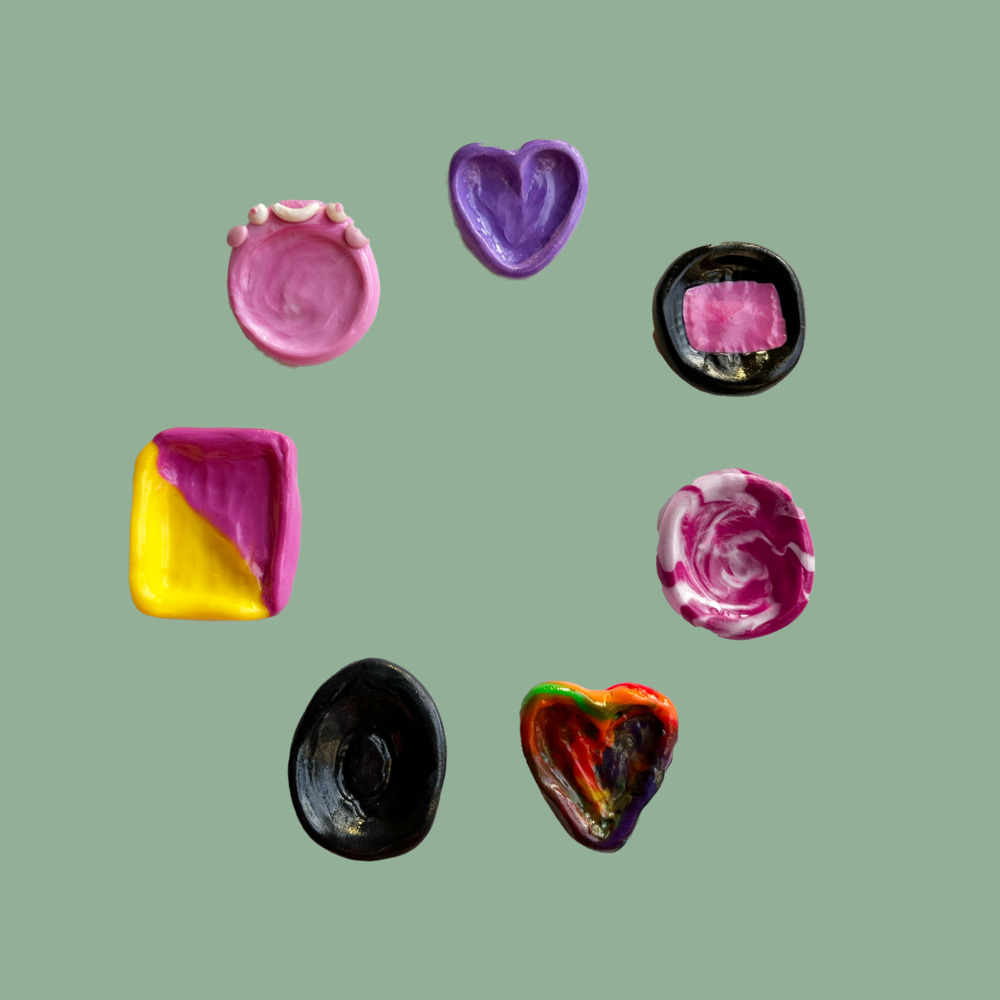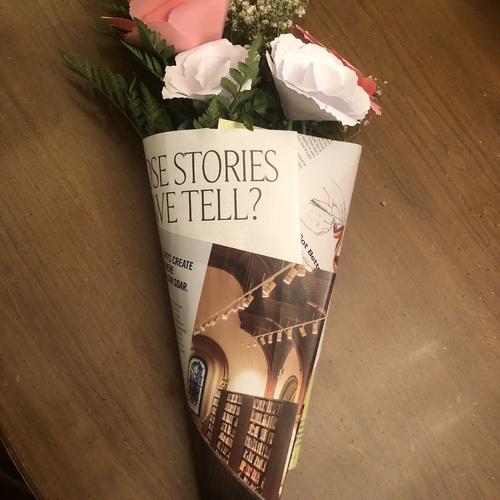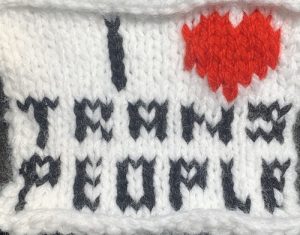By Rachel Corbman
In 2017, E.G. Crichton and Jeffrey Escoffier invited me to participate in OUT/LOOK and the Birth of the Queer, an exhibit celebrating the 30th anniversary of the important gay and lesbian magazine OUT/LOOK National Lesbian and Gay Quarterly. For the exhibit, I was asked to create a new work inspired by the magazine, alongside 37 other queer and trans artists, activists, and writers. We were, to quote the curators, “invited to dive into the archive” and “think about our queer history,” using OUT/LOOK “as a kind of score for creating something new and provocative in a medium of [our] choice.” (You can learn more about my project here.)
I had this experience in mind when I designed “Queer Art and Archives,” a six-week information workshop for Master of Information students at the University of Toronto. On an intellectual level, “Queer Art and Archives” had two goals. First, the information workshop introduced students to a cohort of contemporary filmmakers, performers, and visual artists whose work thematizes queer and trans history, ranging from Jesusa Rodríguez and Liliana Felipe’s controversial performance piece about Juana Aguilar, a “suspected hermaphrodite” charged with committing “abominable sins” with women in 1803, to Vincent Chevalier and Ian Bradley-Perrin’s “Your Nostalgia is Killing Me” poster, critiquing the commodification of AIDS activist histories. Second, the information workshop studied the continuities between this creative work and trends in queer and trans historiography, including a turn towards imaginative and speculative approaches to the past and research that probes our attachments across time to queer and transcestors. Here’s the syllabus if you are interested in learning more about what we watched and read.

In addition to our shared readings, students developed their own creative project based on archival research that they contributed to a digital exhibit on “Queer Art and Archives,” loosely modeled on Crichton and Escoffier’s project. On the first day of class, students worked in small groups to compile a list of Toronto based archives with queer or trans material. Before the end of class, students picked a collection and reached out to schedule an appointment. Although this assignment could be adapted for a range of institutional locations, my students benefited from the plethora of archives in close proximity to our classroom, including the City of Toronto Archives, Toronto Zine Library, the Thomas Fischer Rare Books Library, and, of course, the ArQuives, Canada’s LGBTQ2+ Archives, which proved to be the most popular destination.
Each student visited an archive at some point before the third week of class. During our third meeting, they met again in small groups to share their experience and to brainstorm possible projects. They submitted short proposals to me one week later. In their proposals, students answered four questions: What archival documents or collections inspire your project? What form will your project take? What themes, ideas, or problems will your project address? And finally, how will you include your project in our digital exhibit? While the proposal nudged students to begin thinking about the logistics of showcasing their project on the internet, I held off on introducing students to Omeka, an open-source web-publishing platform, until week five. During week five, students explored websites built on Omeka, including the African American AIDS History Project, Lesbian Herstory Archives Audio/Visual Collection, and CUNY Digital History, discussing the strengths and limitations of the platform. They then practiced creating their own page on our class Omeka exhibit, using random image, video, or audio files as placeholders for their projects. Finally, students updated their existing page with their project and came to class prepared to give a 3–5-minute lightning talk during our last class and “virtual opening” – the highlight of the semester for me.
This blog post can only give a small taste of the thirty-eight projects completed this semester. For their project, Roxy Moon knit replicas of four buttons held at the ArQuives, with text reading “Be My Comrade,” “I’m One Too,” “I ❤️ Trans People,” and “I ❤️ Being Gay.” This project sits with the unknowability of the past indexed by these buttons. As Moon explains in their project description, the ArQuives rarely knows the provenance of the buttons in its collection, that is, who wore it, when, and how it ended up in the collection. Thus, buttons “offer us lingerings of a queer past, but we can never know for certain what that past is.” Like Moon, yanch also drew inspiration from the button collection at the ArQuives. Specifically, yanch used polymer clay to create worry stones that obliquely referenced buttons in the collection. yanch, for example, abstracted a black button with the word “GAY” encased in a pink box into a simple geometric pink and black design. In doing so, this project questions the limitations of a political strategy built on visibility. “Instead of a rallying call or a snarky response to discrimination,” the worry stones remain opaque, offering queer and trans people a “message of hope, of change, of survival.”


Pride Buttons, Soothing Stones by yanch
Likewise, multiple students drew inspiration from Dr. Frieda Fraser and Dr. Edith “Bud” Bickerton Williams’ extensive continent crossing correspondence. Fraser and Williams met as undergraduate students at the University of Toronto in around 1918 and remained devoted to each other until Williams’ death in 1979. For two years, however, Fraser and Williams lived in different countries, while Fraser completed her medical internship in New York City and Williams worked at a bank in England. During their separation, they wrote to each other daily, producing a trail of correspondence that is now preserved by the University of Toronto. As a result, the archival record ironically offers more insight into their separation than their life together.
To attend to this archival absence, Alison Dobslow created a bouquet of paper flowers, which she imagined Fraser might hand to Williams when she greeted her following their prolonged separation. Inscribed with text from the letters, the paper flowers, at once, reference the materiality of their exchanged letters, the garden they eventually kept together, and the meanings particular flowers took on during the Victorian era, a context that Dobslow argues likely continued to shape how they understood their relationship more so than the medicalized explanations of homosexuality popular among sexologists in their day.

Women, devoted by Alison Dobslow

Picking up on similar themes, Robyn Carino created “dear frieda,” a twine game based on Fraser and Williams’ letters. In the game, players receive correspondence addressed to Fraser and decide how to respond to each letter. To adapt the correspondence into a game, Carino added fictional elements, while carefully maintaining the plausibility of their exchange.
Regardless of the path players choose, the game always ends in the same way: Players find out that “Frieda and Bud sent less and less letters” to each other in subsequent years. “That is because Frieda and Bud shared a home,” where “they spent the rest of their lives together.”
Creatively engaging with queer and trans histories with and beyond the limits of the archival record, these projects, and many others, can be perused on the digital exhibit for “Queer Art and Archives.”
Rachel Corbman is a postdoctoral fellow in community data at the Critical Digital Humanities Initiative. Her research focuses on the history of feminist and queer social movements in the late 20th century. Follow Rachel on twitter @rachelcorbman.



